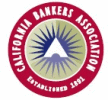Knowledge of the environmental status of a business or commercial property can assist lenders in making rational judgments as to the environmental liability inherent in a real estate loan.Also see: Know and follow ownership / liability tests to maintain EPA lender liability exemption

Affiliate Member
CERCLA Lender Liability Exclusion
Banks are immune from direct environmental liability for properties on which they have made loans provided they follow a set of guidelines as outlined in the 1996 reauthorization of CERCLA (Comprehensive Environmental Response Compensation and Liability Act). Prior to this legislation it was not uncommon for lenders to be viewed as a “deep pocket” and end up footing the costs for environmental investigation and cleanup on those properties where the borrower could not, or would not, meet his environmental responsibility.
Many banks limit the need for full Phase 1 environmental investigations because of the Lender’s Liability Exclusion. However, this “Lender’s Liability Exclusion” does not protect the money that the bank lent to the borrower in the first place. If the borrower ends up in financial difficulties because of environmental or worker safety and health issues and becomes unable to repay his loan, the bank could be in a position of losing on that loan.
According to a survey conducted by Environmental Data Resources, Inc.
- 1 in 10 banks experienced losses due to environmental factors in 2002.
- 1 in 13 Phase I environmental site assessments revealed environmental issues that warranted further investigation.
Knowledge of the environmental status of the business or commercial property can assist the bank in making rational judgments as to the environmental risks inherent in any real estate loan.
Harris & Lee Environmental Sciences, LLC can assist the bank in several ways:
Desktop Review (DTR)
Banks can screen low cap loans for potential environmental risk with a “snapshot” of the property through an Environmental Desktop Review (DTR) with a letter of interpretation from Harris & Lee Environmental Sciences, LLC . This is the most cost-effective option for initial environmental screening of properties. The DTR is used by many clients as a standard screening tool for all commercial financing.
- Environmental Radius Reports are performed within the ASTM scope of requirements. If issues are apparent, these issues are communicated to the bank verbally and in written form in an effort to assist the bank in dealing with them properly.
Records Search with Risk Assessment (RSRA)
The Records Search with Risk Assessment (RSRA) is a more comprehensive desktop report that meets SBA Lender and Development Company Loan Programs (SOP 50 10 (5)) Requirements for environmental due diligence. The RSRA augments the DTR with two historic reports that include a Sanborn and one other historic report such as a City Directories Report or a Historic Aerial Photography Report. As with the DTR, a written discussion of the data in these various reports is prepared by an Environmental Professional.
- When SBA financing is involved or when historical property usage is of concern.
Modified or abbreviated Environmental Site Assessment Report
Our abbreviated environmental site assessment report is an intermediate tool devised by Harris & Lee Environmental Sciences, LLC that includes an Environmental Radius Report, a brief site reconnaissance, and limited investigative inquiries into historical use.
- It is performed in conformance with ASTM protocol, and when performed by experienced senior personnel to draw comprehensive conclusions, it will indicate additional environmental conditions which warrant a Phase 1 environmental site assessment.
Not only is the lender assured costs will be kept to a minimum, but the report can be expanded if considerations require additional detail.
Though components of the modified assessment are done in compliance with ASTM standards, it does not technically meet ASTM standards because it is abbreviated. Even so, this abbreviated environmental site assessment will satisfy due diligence requirements for the first phase of the Lender’s Exemption rule.
All Appropriate Inquiries – Environmental Site Assessment, Phase I Investigation
The “Brownfields Amendments” to CERCLA in 2002 clarified liability provisions for innocent landowners and added protections from liability for bona fide purchasers and contiguous property owners who meet certain statutory requirements. Known as the All Appropriate Inquiries (AAI) Rule, the requirements were finalized by the U.S. Environmental Protection Agency on November 1, 2005.
Only those purchasers who rigorously perform All Appropriate Inquiries prior to purchase can benefit from these protections. The advantage for lenders is that these landowner exemptions protect the borrower and collateral in commercial real estate loans.
The purchase of contaminated property no longer necessarily means the purchaser is the new Responsible Party IF the AAI requirements are rigorously followed.Because AAI completion is a threshold step to qualify for one of the three landowner liability exemptions, it is important for the lender to understand how and when All Appropriate Inquiries must be completed under the final AAI rule. It is worth noting that these limits of liability have yet to be tested in court and they may well end up in state or Federal Supreme Courts.
Harris & Lee Environmental Sciences, LLC performs All Appropriate Inquiries – Environmental Site Assessments, Phase 1 Investigations using ASTM E 1527-05 standards and practices. More
Tenant Environmental Compliance Audits
Harris & Lee Environmental Sciences, LLC assists lenders in monitoring ongoing environmental compliance at tenant facilities. The most important aspect of tenant monitoring on a regular and agreed upon basis is to identify and document potential environmental problems which will or may devalue the property, or cause the extension of liability ownership to the lender.
Potential environmental risk is minimized when, prior to lease development; a visit is made to the potential tenant’s existing facility to review the hazardous waste materials management plan and tools and determine how well it is followed. This is the best indicator of how the operation will be run once the tenant is situated on the new property. Specific issues regarding future compliance can be identified for coverage in the lease agreement.
Because previous tenants and lenders can be assessed penalties by the EPA, lenders are urged to have pre-exit and pre-lease termination assessments of the property. Doing so minimizes the owner and lender exposure by documenting the tenant’s departure activities. On occasion it may be prudent to require a tenant to develop a comprehensive closure plan, and to police the implementation of that closure plan, as well as to monitor the effectiveness of such a plan. It is helpful to stipulate and draw a prospective tenant’s attention to this lender option in the lease. The intention is that tenants who are aware they will be monitored are more likely to be well-prepared, and lease termination may be more manageable.
Educational environmental seminars for banks and other financial institutions
Staff training is an integral part of a bank’s environmental management system. Harris & Lee Environmental Sciences, LLC provides informative seminars and other training sessions that are customized to meet the needs of our clients. The cost is modest; the benefits begin with improved judgments of environmental risk.

